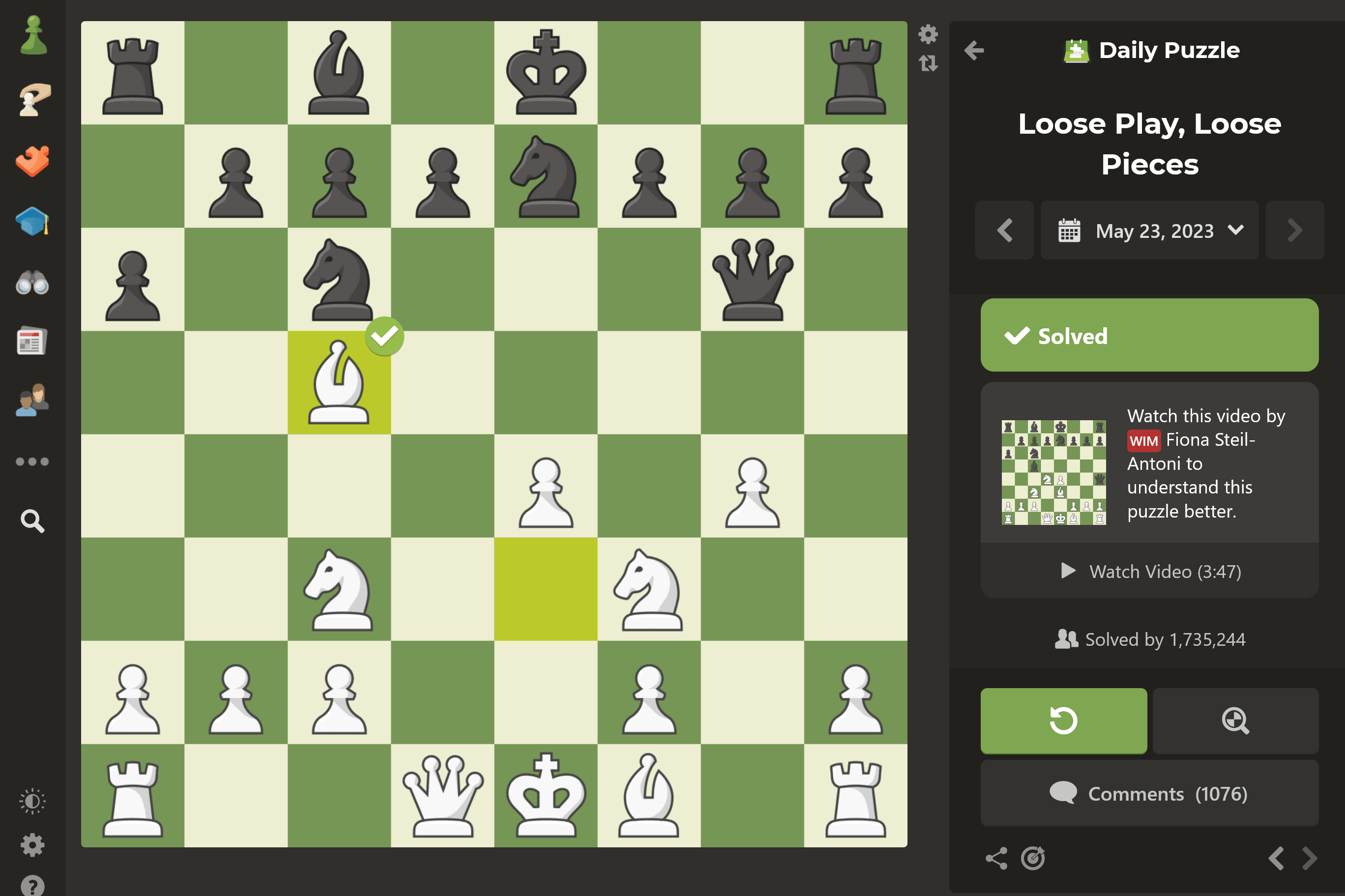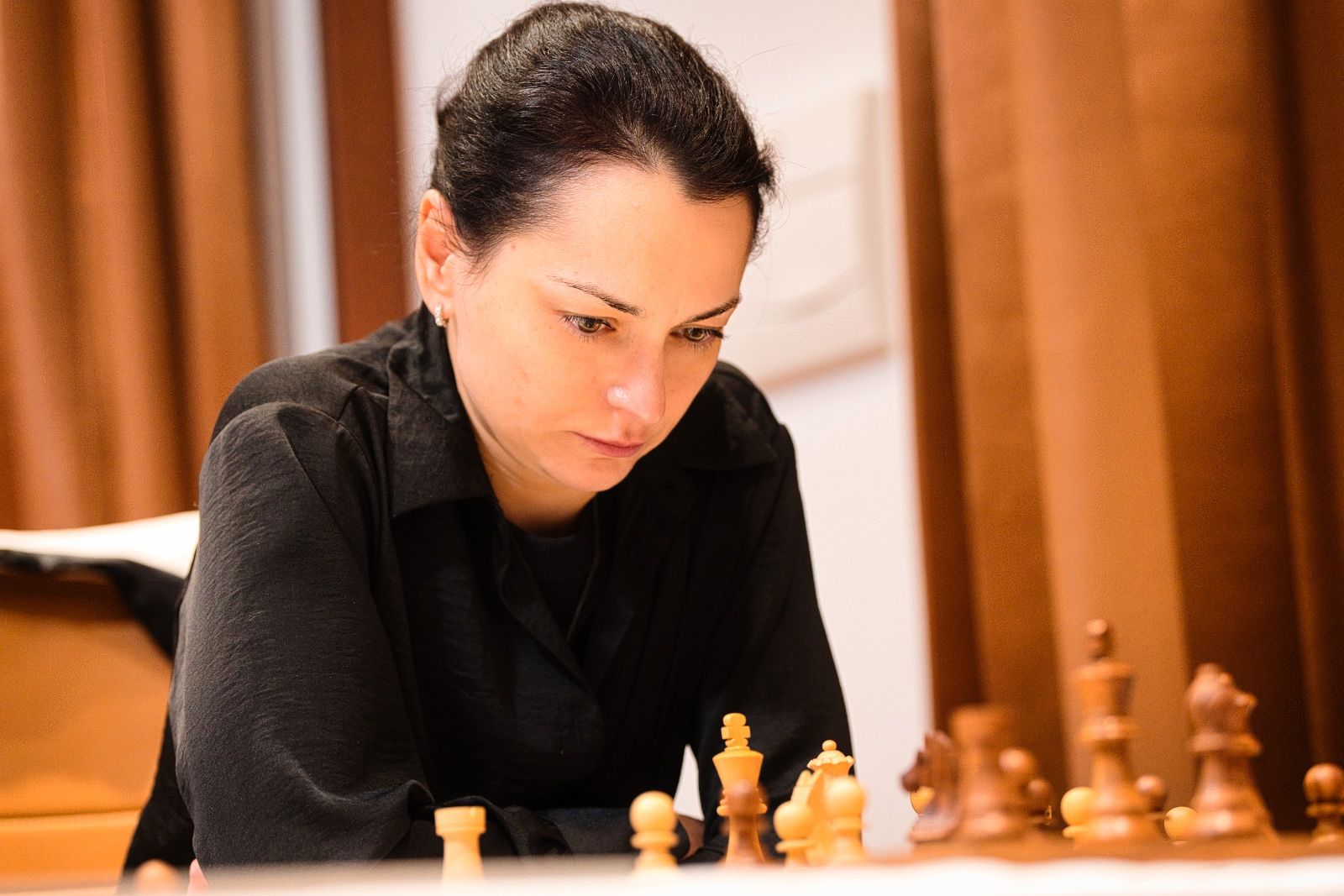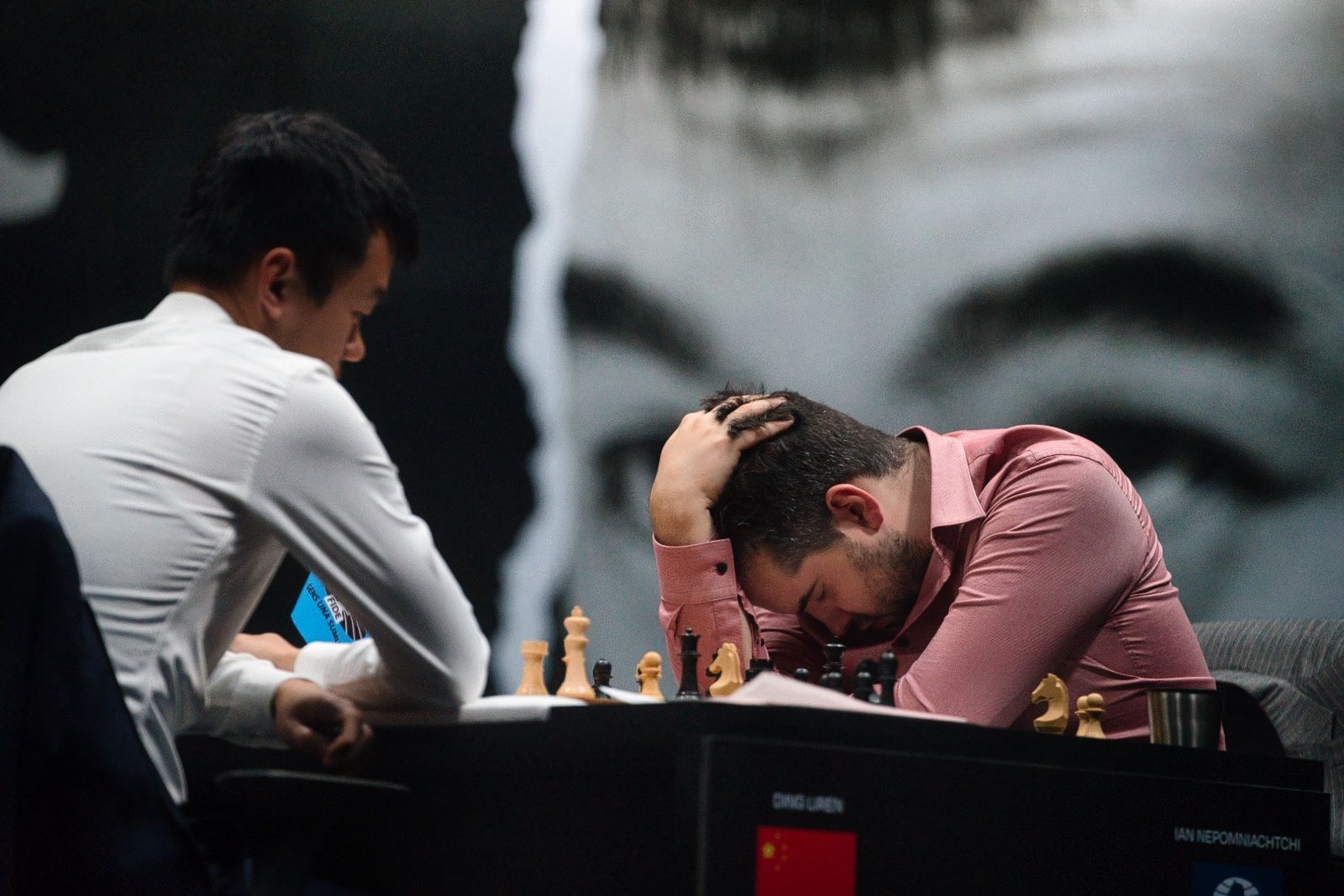
The Right Way To Improve Your Tactics Using Puzzles
In his book Positional Decision Making in Chess, GM Boris Gelfand describes how excited he got as a boy when his father brought home a new chess book, a collection of the games of Akiba Rubinstein. He read the book cover-to-cover and immediately started again at the beginning. Back in those days, because chess knowledge wasn’t always easy to come by, a new book was a cause for celebration.
Today we have the opposite problem. Endless chess resources are available online, often for free. The hard part isn’t finding something to study; it’s cutting through the jungle of content to find what’s really valuable and important. For most players, improvement comes not from doing more, but from focusing on less—simplifying.

And it doesn’t get any simpler than puzzles. Puzzles are for chess players what layups are for basketball players and scales for musicians. You can never stop working on the fundamentals. Yet as with any kind of chess study, it’s not only what you do—it’s how you do it. Depending on how you approach puzzles, you could be getting better each day… or simply going through the motions and treading water.
With that in mind, here are three ways to get more out of puzzles—and one bad habit to avoid at all costs.
Do A Little Each Day
At one time or another, you probably crammed for a test by staying up all night studying. You might be surprised to learn that, according to the research, cramming does work (sort of). It’s possible to pass a test by cramming, but your knowledge will be extremely short-lived. Within a few days, you probably forget most of what you learned. To build long-term knowledge, you need consistency.
Why is consistency so important? It could be that when you study the same thing day after day, it sends a message to your brain that the material should be retained. Sleep is another key factor in learning. It could be that by spreading out the learning over multiple days, it is consolidated during sleep more effectively. Either way, while the exact mechanism is unclear, the fact that it works isn’t. If you have an hour to work on puzzles over the course of a week, it’s better to do 10 minutes daily for six days than a single one-hour binge once a week.

The good news is that if you work on puzzles every day, you don’t need to go nuts on any single day. Even 10 minutes a day is enough to make real progress. I usually suggest 10 to 30 minutes per day, depending on how much time you have, and how much you want to prioritize chess improvement.
I learned from the book Atomic Habits that it’s easier to stick with a habit if you do it at the same time every day. Personally, I like to do puzzles first thing in the morning while I have coffee. It’s nice to get a little studying done before I am distracted by all the other responsibilities of the day. And I can go through the rest of the day knowing I made at least a little progress on my chess.
Retry Your Mistakes
One of the lesser-known puzzle features on Chess.com is the Custom Puzzles option. This allows you to select “Puzzles I Have Failed” and train with only them.
If you miss a puzzle the first time, there’s probably a reason: you’re not solid on the pattern, you got distracted by a red herring, or you failed for some other reason. It makes sense to go back over puzzles you miss to shore up weaknesses. You can even set a puzzle rating minimum to filter out the dumb ones you miss while trying to set a Puzzle Rush record.

This isn’t something I would do every day, but remembering to mix blind spots in once a week or even once a month is a good way to make sure you’re addressing them.
Take Your Time
When you do puzzles, there’s a temptation to blast through as quickly as possible. If your ultimate goal is to get really good at blitz or bullet, this might make sense. (Actually, in that case, you should probably do a lot of Puzzle Rush.) But most people who study chess in a structured way care more about rapid or classical. And in those time controls, precision is more important than speed. Most of the time, it doesn’t matter whether you see a tactic in six seconds or three seconds, but overlooking your opponent’s reply because you played too hastily could absolutely cost you a game.
For that reason, it’s important not to rush when you’re doing puzzles. Take your time to consider all the possibilities. In particular, push yourself to find the best defenses for the opponent. Most of us find it easier to identify great moves for ourselves than tricky defenses for our opponents, but both are equally important. In a real game, if your opponent uncorks a defensive move you hadn’t anticipated, there’s no guarantee you’ll have a good reply. And if you don’t, there’s a good chance you just lost the game.

The time to start thinking about your opponent’s defenses isn’t after you've made your first move and their reply appears on the board. It’s before you make that first move. You shouldn’t wait to see what they’re going to do and then figure out how to respond to it. You should already know how they can try to defend and how you can overcome those defenses.
One caveat, though: if you are really not getting a certain puzzle, there is no need to bang your head against the wall. If you’ve been staring at a puzzle for a few minutes and you really have no clue what’s going on, chances are it’s a pattern that you don’t know yet. If that’s the case, it’s not an efficient use of your time to stare at it for 15 more minutes. Take your best shot and review the answer carefully so you know the pattern next time.
One Thing Not To Do
Warning: There is one bad habit that’s worth addressing because it’s so common and has the potential to undo most or all of the benefits of puzzle training. That is playing the first juicy-looking move you see without checking whether it works. It’s hard to know the exact numbers, but my impression from how the puzzles are rated and what my students tell me is that many players, perhaps even a majority, do puzzles this way. If you can break out of this bad habit, you give yourself a big edge.
Broadly speaking, puzzles train two things: pattern recognition and thought process. Pattern recognition comes from seeing many positions and their solutions. To be honest, even if you don’t have a great process for doing puzzles, you still get a lot of the benefits of pattern recognition just from seeing the positions. But you won’t be optimizing the time you spend on puzzles.
Thought process is how you structure your thinking as you analyze a position. It includes how many moves you consider, what order you calculate variations, when you decide to stop your calculation and move, and so on. If your only goal in chess is to do puzzles forever, playing the first move you see isn’t such a bad thought process because the worst outcome is that the computer tells you it’s wrong, and then you try again.

But in a real game of chess, there are no takebacks. If you get the first move wrong, you might lose the game on the spot. So if you always bash out the first move you see, you reinforce a disastrously bad thought process that could cancel out the pattern recognition benefits or, in a worst-case scenario, even make puzzles a net negative for your chess.
We call a plausible-looking move a candidate move. Spotting these moves isn’t bad—it’s an essential part of the process. But done properly, finding candidate moves should be the beginning of the process, not the end. Once you’ve spotted a candidate move, you need to verify whether it works against your opponent’s toughest defenses. Only when you’ve proved to yourself that it works should you go ahead and make the move.
I think of Regis Philbin, who would ask contestants on Who Wants to Be a Millionaire, “Is that your final answer?” If Regis were in front of you as you make your move, you should be able to say, “Yes, final answer,” and have the variations to back it up.
Wrapping Up
Let’s recap the main points:
- Do a few puzzles every day.
- Occasionally review your mistakes.
- Take your time. Precision beats speed.
- Don’t just bash out the first move you see!
So there you have it—three ways to get more out of puzzles and one habit to avoid. Remember, it’s all about consistency. Even the most talented players had to study for years to become masters. If you work on puzzles with focus every day, you’re well on the path to mastery.
Check out more content from FM Nate Solon here!


